Written by Newell Kitchen, USDA-ARS; Stirling Stewart, Univ. of Missouri; Lance Conway, Univ. of Missouri; Matt Yost, Univ. of Missouri; Paul Carter, Corteva Agriscience.
Key Findings
- Planting corn at the deeper end of the recommended range (2.5 to 3.0 inches) was advantageous for corn emergence in both coarse- and fine-textured soils.
- Planting deeper consistently resulted in greater emergence uniformity and similar or improved corn emergence rates.
- Corn planted shallow in fine-textured soil was vulnerable to poor emergence and yield loss.
Typical Corn Planting Depth Guidance
- Studies throughout the U.S. have found optimum corn seeding depths to vary from 1 to over 3 inches depending on soil texture, moisture, temperature, seeding date, and other factors.
- University Extension guidelines in the U.S. Corn Belt commonly recommend seeding depths of 1.5 to 2.5 inches.
- Specific seeding depth recommendations within the 1.5- to 2.5- inch zone are often based on soil texture and moisture conditions.
- Shallower planting is recommended for poorly drained finer-textured soils, while deeper planting is recommended for well drained coarser-textured soils.
- A field study was conducted by Dr. Newell Kitchen, USDA-ARS, and Stirling Stewart, Lance Conway, and Dr. Matt Yost of the University of Missouri as a part of the Pioneer Crop Management Research Awards (CMRA) Program to determine the influence of seeding depth and soil texture on corn emergence and grain yield.

Corn Planting Depth and Soil Texture
Watch a quick overview of this article.
Study Description
- Field studies were conducted in 2017 and 2018 near Claysville, MO. Within the same field, two contrasting soil textures in alluvial soils along the Missouri River were selected to provide two separate experiment areas each year.
- In 2019, extensive and prolonged Missouri River flooding prevented this same farm being used for the study, so an alternative field with variable soil texture near Salisbury, MO was used.
- In 2018 and 2019, planters used in the study were equipped with DeltaForce aftermarket hydraulic downforce systems to help ensure the target planting depth was consistently achieved.
- Seeding Depths:
- 1.5 inches
- 2.0 inches
- 2.5 inches
- 3.0 inches (not included in 2019)
- Soil Textures:
- Sand
- Silty clay loam
- Plot Layout:
- 2017-2018: 4 rows x 30 ft, 30-inch spacing
- 2019: 24 rows x 3280 ft, 30-inch row spacing
- Seeding rate (25,000, 30,000, and 35,000 seeds/acre) and starter fertilizer were included as experimental factors in the initial year of the study, but were discontinued after no significant effects were found.
- All plant measurements were taken for both studies from two 10-ft long sections from adjacent rows in each plot. Plant emergence was monitored and recorded daily for each plant.
- Three response measurements were generated from the collected emergence data.
- Emergence rate: Total time required from planting to 90% emergence
- Emergence window: Time between first emergence and 90% emergence
- Emergence percent: Fraction of emerged seedlings from total seed planting
- Sensors capturing soil moisture, soil temperature, and electrical conductivity every 15 minutes were installed at the four seeding depths within each replicate of both soil texture sites.
Results: Planting Deeper Improved Emergence
- In 2017, the daily average air temperature within the first three days after planting was 70 °F, substantially higher than the same for 2018 and 2019 (41 and 57 °F).
- Over the germination period, soil moisture was most variable in 2017. Soil moisture measurements indicate shallow planted corn had much less water available on fine textured soil as there was only 12% compared to 41% at the deepest planted depth.
- In 2018 and 2019 rainfall the weeks prior to planting was ample and therefore soil moisture was near field capacity at all planting depths.
Table 1. Analysis of variance for corn stand establishment characteristics from 2017 to 2019.
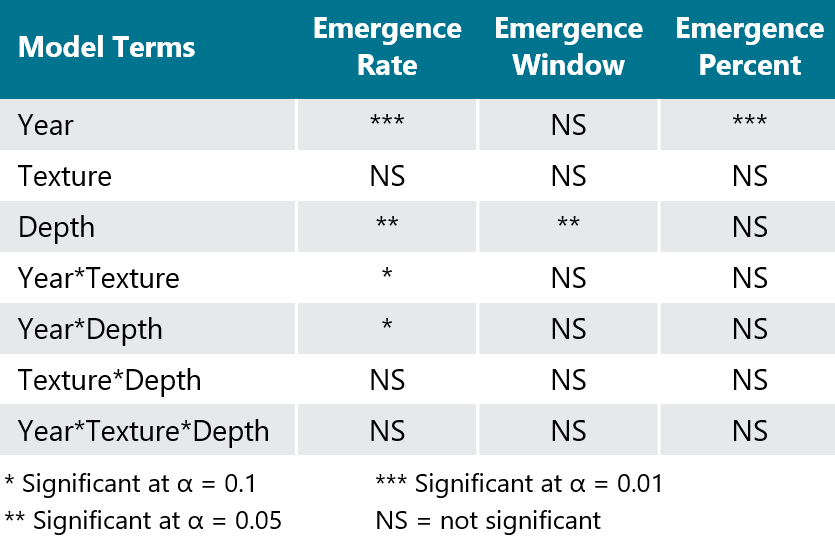
Corn Emergence Rate
- Emergence rate (days to 90% emergence) was affected by growing season conditions (i.e., year) and its impact on texture and planting depth (Table 1).
- Planting depth did not influence emergence rate in 2018 or 2019, but it did in 2017 (Figure 1).
- In 2017, seed planted at the three deeper depths had an emergence rate between 8 and 10 days, but at the shallow depth an additional 5 to 6 days were needed to reach 90% emergence.
- In 2017, soil texture also affected emergence rate (Figure 2).
- Emergence rate was 3.3 days faster on the coarser soil.
- Field observations made at planting noted that the shallowest planting depth on fine-textured soil likely experienced reduced seed-to-soil contact due to larger soil clods and effects of residues from the previous crop.
Corn Emergence Window
- Seed planted at the shallowest depth had an emergence window ~2.5 days longer than the deeper plantings (Figure 3).
- The shallowest planted seed was more vulnerable as a result of a fluctuating seedbed environment due to weather elements of temperature and moisture.
Corn Emergence Percent
- Emergence percent relative to the targeted seed population was not affected by depth, but differed by year with averages of 102.1%, 97.7%, and 94.2% for 2017, 2018, and 2019, respectively.
- In 2017, a smaller round seed resulted in a relatively high number of doubles, which likely accounts for emergence being over 100% of target.
- Cooler temperatures in 2018 and 2019 help explain some of the decrease in emergence percentage.
Yield
- Planting depth did not significantly impact yield in either the course or fine texture soils (Table 2).
- Yield was significantly greater on the fine texture soil than the course texture soil at all planting depths (Table 2).
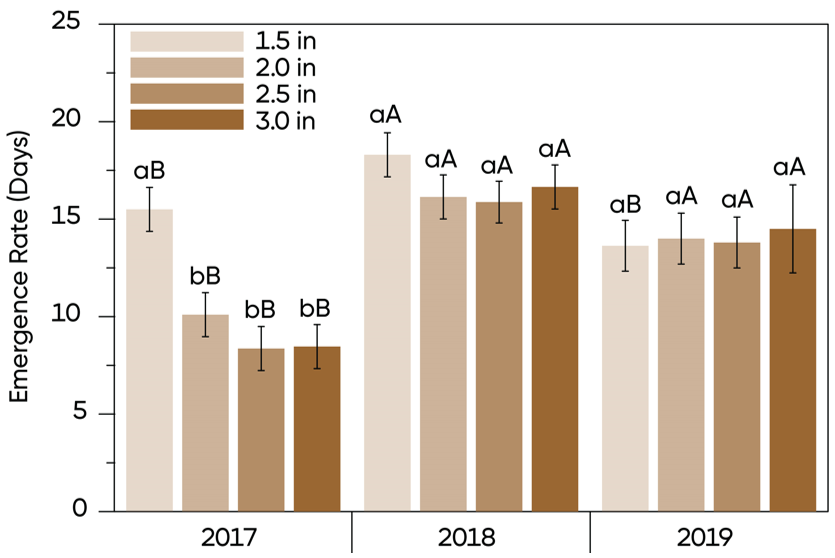
Figure 1. Planting depth effects on emergence rate by year. Lowercase letters indicate significant differences within years and uppercase letters indicate significant differences across years.
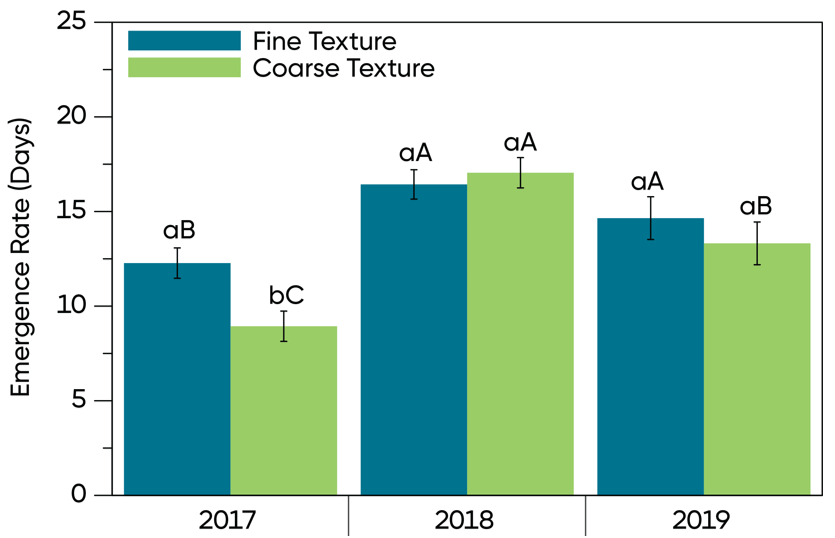
Figure 2. Soil texture effects on emergence rate by year. Lowercase letters indicate significant differences within years and uppercase letters indicate significant differences across years.
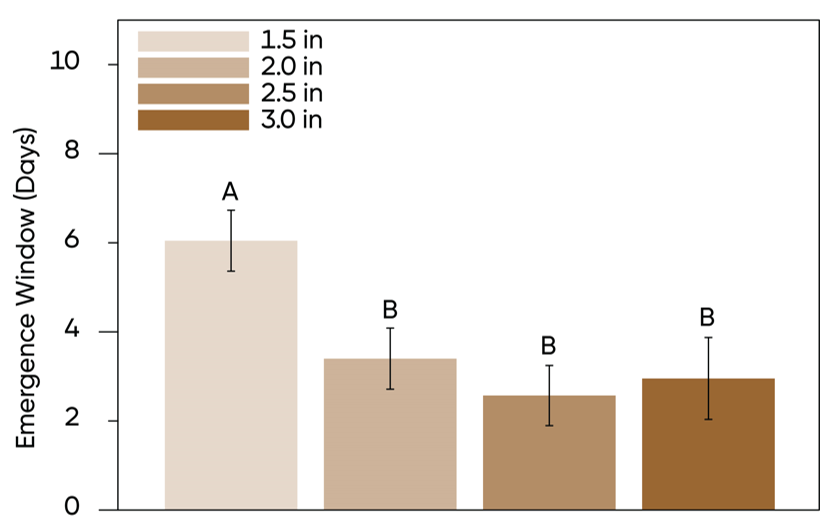
Figure 3. Planting depth effect on emergence window. Letters indicate significant differences.
Table 2. Plot yield for all planting depths and soil textures averaged across years. Letters indicate differences between textures.
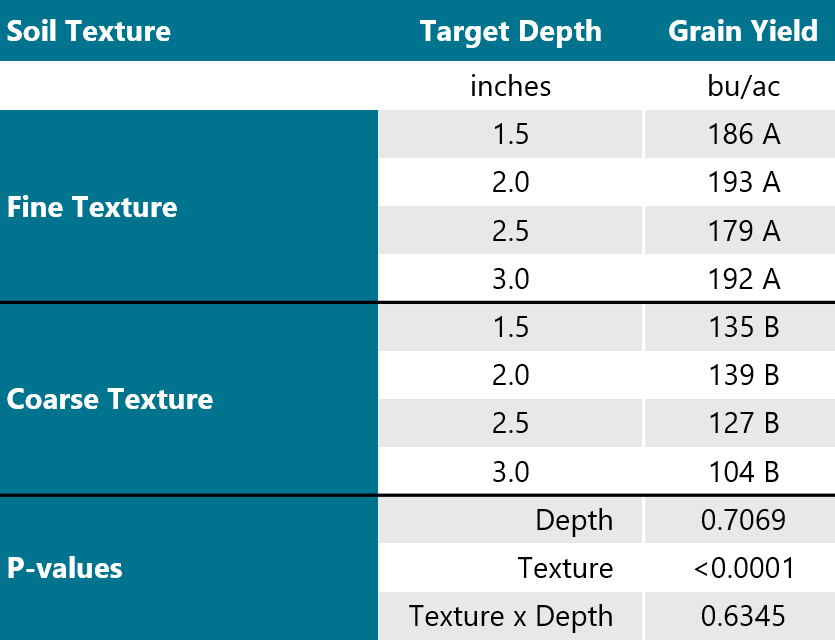
Conclusions
- University Extension guidelines in the U.S. Corn Belt commonly recommend seeding depths of 1.5 to 2.5 inches.
- Results of this study suggest that planting corn at the deeper end of the recommended range can be advantageous for emergence in both courser- and finer-textured soils.
- Planting deeper consistently achieved greater emergence uniformity. Additionally, planting deep on these soils achieved similar or improved emergence rates.
- Uniformity at target planting depth, which includes soil temperature, moisture, and structure, greatly impacts emergence window.
- Resilience of soil texture to maintain similar microenvironments when encountering temperature fluctuations impacts emergence percent.
Preparing to Plant Corn?
More insights for your corn acres.
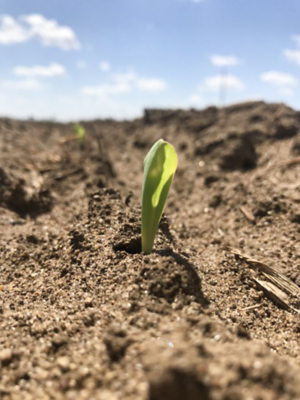
Which Planting Outcomes Impact Yield?
Planning and execution in corn planting are critical to maximize the genetic potential of today’s elite corn hybrids.
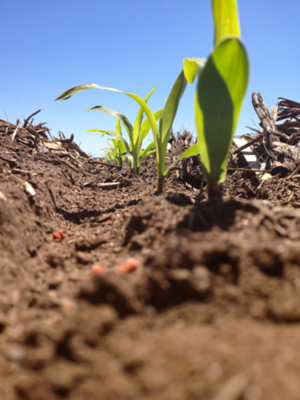
Corn Planting Depth and Landscape Position
Learn how your planting depth and landscape position impact corn emergence in different soil temperatures.
Research conducted as a part of the Pioneer Crop Management Research Awards (CMRA) Program. This program provides funds for agronomic and precision farming studies by university and USDA cooperators throughout North America. The awards extend for up to four years and address crop management information needs of Pioneer agronomists, sales professionals, and customers.
The foregoing is provided for informational use only. Please contact your Pioneer sales professional for information and suggestions specific to your operation. 2017-2019 data are based on average of all comparisons made in two locations through Dec. 1, 2019. Multi-year and multi-location is a better predictor of future performance. Do not use these or any other data from a limited number of trials as a significant factor in product selection. Product responses are variable and subject to a variety of environmental, disease, and pest pressures. Individual results may vary.